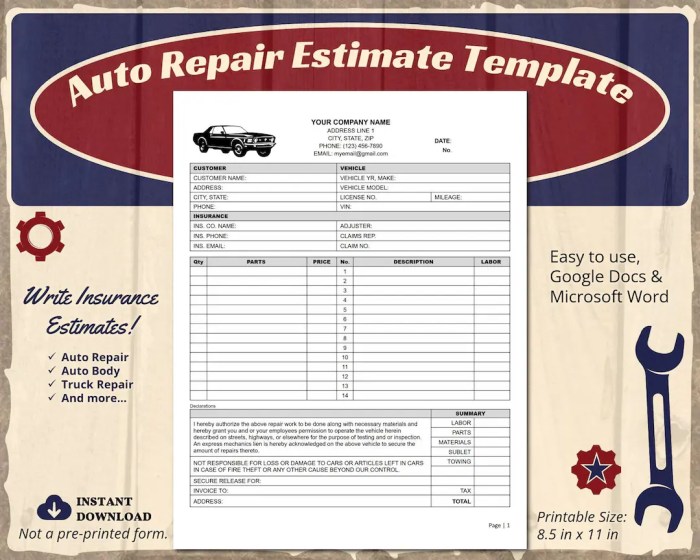Navigating the world of auto insurance can feel like deciphering a complex code. Fortunately, online auto insurance estimate calculators offer a user-friendly way to gain a clearer understanding of potential costs. These tools provide a preliminary assessment of your insurance premiums based on various factors, allowing you to make informed decisions before committing to a policy. This guide delves into the intricacies of these calculators, exploring their functionalities, limitations, and how to leverage them for effective comparison shopping.
We’ll examine the key factors influencing your insurance estimate, from your driving history and vehicle details to the type of coverage you select. Understanding these elements empowers you to make choices that align with your needs and budget. We’ll also address common misconceptions surrounding online calculators and highlight the importance of using them as a starting point for a comprehensive insurance comparison.
Factors Affecting Auto Insurance Estimates

Several key factors influence the final cost of your auto insurance premium. Understanding these elements can help you make informed decisions and potentially save money. This section details the major contributors to your insurance estimate.
Driving History
Your driving record significantly impacts your insurance costs. Insurance companies assess risk based on past driving behavior. A clean driving record with no accidents or traffic violations generally results in lower premiums. Conversely, accidents, speeding tickets, or DUI convictions lead to higher premiums, reflecting the increased risk you pose to the insurer. For example, a driver with two at-fault accidents in the past three years will likely pay considerably more than a driver with a spotless record. The severity of the accident also plays a role; a minor fender bender will have less impact than a serious collision. Furthermore, the number of years you’ve held a driver’s license is a factor; newer drivers often face higher premiums due to a lack of established driving history.
Vehicle Type and Value
The type and value of your vehicle are major determinants of your insurance premium. Generally, more expensive cars cost more to insure because repairs and replacements are significantly more costly. Sports cars and high-performance vehicles often fall into higher insurance brackets due to their higher risk profile – they’re more likely to be involved in accidents and require more expensive repairs. The vehicle’s safety features also play a role; cars with advanced safety technologies like anti-lock brakes and airbags may qualify for discounts. For instance, insuring a new luxury SUV will be more expensive than insuring an older, smaller sedan.
Coverage Options
The level of coverage you choose directly affects your premium. Different coverage options offer varying levels of protection and, consequently, different price points. Liability coverage, which pays for damages you cause to others, is typically required by law, but the amount of coverage you select influences your cost. Collision coverage, which pays for damage to your vehicle regardless of fault, and comprehensive coverage, which covers damage from events like theft or hail, are optional but significantly increase premiums. Uninsured/underinsured motorist coverage, protecting you in accidents with uninsured drivers, also impacts the overall cost.
Coverage Level Cost Comparison
| Coverage Level | Liability | Collision | Comprehensive |
|---|---|---|---|
| Minimum Required | $500/year (example) | N/A | N/A |
| Standard | $750/year (example) | $300/year (example) | $200/year (example) |
| High Coverage | $1200/year (example) | $500/year (example) | $400/year (example) |
*Note: These are example costs and will vary significantly based on location, individual risk profile, and insurer.*
Illustrative Examples

Auto insurance estimate calculators offer a powerful tool for planning and budgeting, especially when significant financial decisions are involved, such as purchasing a new vehicle. These calculators allow users to explore various scenarios and understand the cost implications of different choices. The following examples illustrate the practical applications of such tools.
New Car Purchase Planning
Imagine Sarah is planning to buy a new 2024 Honda Civic. Using an online auto insurance estimate calculator, she inputs the vehicle’s make, model, year, and zip code. She then selects her desired coverage levels: liability coverage of $100,000/$300,000, collision coverage with a $500 deductible, and comprehensive coverage with a $500 deductible. She also provides information about her driving history, including her age (28), clean driving record, and a few minor traffic violations. The calculator estimates her annual premium to be approximately $1,200. Satisfied with the estimate, Sarah proceeds with her car purchase, knowing the approximate cost of insurance. By using the calculator, Sarah avoided the surprise of a high insurance bill after buying the car.
Driving Record and Insurance Premiums
This infographic visually represents the relationship between driving history and auto insurance premiums. The horizontal axis displays the number of accidents and moving violations in the past three years, ranging from zero to five. The vertical axis represents the annual insurance premium, starting from a base premium of $800 and increasing incrementally. The graphic shows a clear upward trend: as the number of accidents and violations increases, so does the premium. For instance, a driver with zero incidents pays the base premium of $800. A driver with one accident pays approximately $1,000, while a driver with three or more incidents pays significantly more, potentially exceeding $1,500. The infographic effectively illustrates how a clean driving record can lead to substantial savings on insurance costs.
Impact of Different Coverage Options
Let’s consider a hypothetical scenario involving a 2022 Toyota Camry. The following bulleted list shows how different coverage choices affect the total insurance cost. It is crucial to understand that these are hypothetical examples and actual costs vary based on multiple factors.
- Minimum Coverage: Liability only ($50,000/$100,000). Estimated annual premium: $500. This option offers the lowest cost but provides minimal protection in case of an accident.
- Standard Coverage: Liability ($100,000/$300,000), collision ($500 deductible), comprehensive ($500 deductible). Estimated annual premium: $1,000. This represents a more balanced approach, offering better protection at a moderate cost.
- Comprehensive Coverage: Liability ($250,000/$500,000), collision ($250 deductible), comprehensive ($250 deductible), uninsured/underinsured motorist coverage. Estimated annual premium: $1,500. This option provides maximum protection but comes with a higher premium.
These examples highlight how choosing different coverage levels significantly impacts the overall cost of auto insurance. Careful consideration of individual needs and risk tolerance is essential when selecting coverage options.
Last Recap

In conclusion, while online auto insurance estimate calculators are invaluable tools for preliminary cost estimations, it’s crucial to remember their limitations. They serve as a powerful starting point for comparison shopping, enabling you to refine your choices and negotiate favorable rates. By understanding the factors influencing premiums and using these calculators strategically, you can navigate the insurance landscape with greater confidence and secure the best possible coverage for your needs and budget. Remember to always obtain official quotes from multiple insurers to ensure accuracy and finalize your selection.
FAQ Resource
What information do I need to use an auto insurance estimate calculator?
Typically, you’ll need information about your vehicle (year, make, model), your driving history (accidents, violations), your location, and the type of coverage you’re seeking.
Are online estimates always accurate?
No, online estimates are just that – estimates. They provide a general idea of costs but may not reflect the final quote from an insurance company due to factors not included in the calculator.
Can I use an auto insurance estimate calculator to compare different insurers?
Yes, using multiple calculators from different insurance providers allows you to compare estimates and identify potentially better rates. However, always obtain formal quotes from the insurers.
What should I do if the online estimate is significantly different from the actual quote?
Contact the insurance company to understand the discrepancy. There may be factors influencing the quote that weren’t included in the online estimate, such as specific risk assessments or discounts.